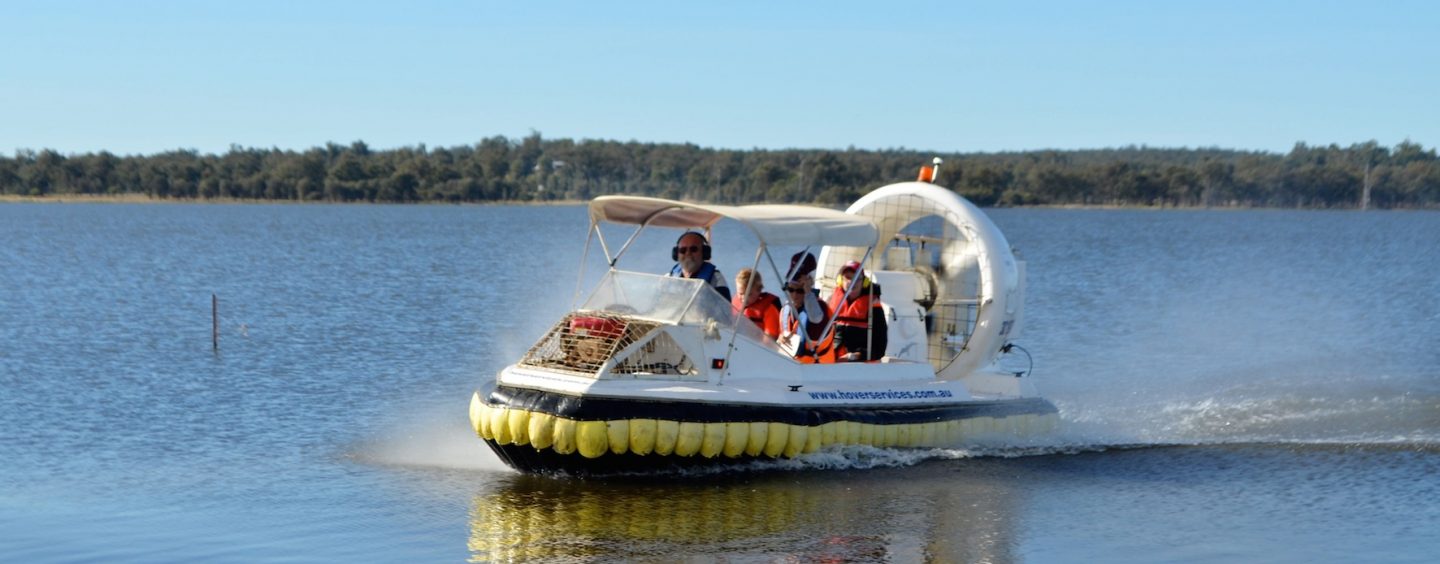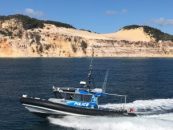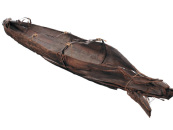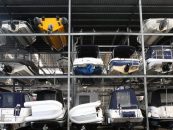If you are interested in buying your first vessel for fun days out on the water, or are keen to expand your boating collection, it might be time to consider becoming a hover enthusiast.
Hovercraft (also known as air cushion vehicles or ACVs) are special vehicles that allow users to explore places usually inaccessible to other boats. The vessels use fans or propellers to create two streams of air; one provides forward thrust and the other, lift. The thrust air propels the hovercraft forward; direction is controlled with rudders. The lift air is held under the hovercraft by a flexible “skirt” which lifts the craft clear of the surface.
The hovercraft was invented more than 50 years ago in Britain by engineer inventor Sir Christopher Cockerell. He developed an experimental hovercraft after first testing out his idea by popping a tin of cat food inside a coffee tin and blowing a jet of air through the gap between the two. Aiming to create a cushion of air, Cockerell’s test was a success. He then fine- tuned his designs and secured funding.
After eight months working with boating firm Saunders Roe on the Isle of Wight, the result was an approximately six-metre craft. Launched in 1959, it crossed the English Channel in two hours, with the inventor onboard. Cockerell’s hovercraft revolutionised sea travel, and in the 1960s a fleet of craft was regularly used.
HOVERCRAFT IN AUSTRALIA
In Australia, the industry is small but passionate. According to Steve Stephens, the publicity officer for the Queensland Sporting Hovercraft Club (QSH), “there are about 300 small recreational hovercraft Australia-wide, and around 40 in Queensland.”
In the late 1960s, Taylor Craft in Adelaide built some of the nation’s first hovercraft. Queensland University also got into the act around the same time, followed by Peter Venn in the mid-1970s. Still involved in the field today, Venn was the second person in Queensland to obtain an Air Cushion Vehicle (ACV) Masters Certification of Competency.
Steve notes, “Ross McLeod had a factory on the Logan River. He built six-seater to 50-seater commercial hovercraft, which were exported to Africa, Asia and other overseas markets. There is also the famous Spirit of Broome which has been continuously providing daily tours from Broome to Roebuck Bay since 1988.”
When many Queenslanders think of hovercraft though, Christopher Skase comes to mind. The disgraced businessman ran two large, four- engine, 40-seater hovercraft on shuttle runs between Brisbane Airport and the Gold Coast Spit between 1988 and 1992.
WHERE TO GO HOVERCRAFTING
One of the best places to go hovercrafting is the Southern Moreton Bay area. “We especially like going around the islands from Coochiemudlo in the north, to as far south as Tipplers,” says Steve. However, hovercrafters must pay for public liability insurance ($10 million value) to be able to access these areas. As far as other areas goes, Steve suggests, “Parts of the Broadwater, Logan River, Brisbane River, Lake Coolmunda, Moogerah Dam, and Somerset Dam are good and can be used without a permit and insurance.”
HOW TO USE
Hovercraft can travel over a variety of surfaces, including sand, grass, quicksand, water, gravel, mud, snow and ice. “Hovercraft are at their best on mud, sand, and extremely shallow water,” says Steve, “but they also easily traverse grassy areas.” Hovercraft cannot handle much wind, since there is not much gripping the water. Stick with smooth conditions as a result.
HOVERCRAFT AND THE ENVIRONMENT
What a lot of people do not realise is that hovercraft are one of the most eco-friendly motorised vessels. By riding above the surface, they can travel even over the most environmentally-sensitive areas without disturbing the surface or striking marine life (unlike traditional propeller-driven craft).
Moreover, there are no issues with noise below the surface, because water is not thrashed about. Sea-bed erosion is not a problem when operating the vessels in shallow waters. Since fuel systems are contained within the hull structure, leaks cannot enter the water or otherwise contaminate the environment. Steve notes, “Fuel consumption is about half that required for a similar sized convention craft.”
HOVERCRAFT CLUBS
Today, the Australian industry is overseen by the Australian Hovercraft Federation Inc. (AHF). The federation is dedicated to “encouraging and developing the safe, considerate and sustainable use of recreational hovercraft”. By joining, you can get tips on things like what type of hovercraft to buy or build, areas to use your vehicle, usage tips from members, and information about events. AHF is the peak body for recreational hovercraft in Australia and consists of affiliated state bodies, plus state and regional branches. The Queensland Sporting Hovercraft Club (QSH) is a member of the AHF, and has 25 members based in Brisbane, and a handful of interstate and international members. It has been operating since 1967.
Steve says, “We’re a social touring group. Our members’ interests are diverse, and craft are used not just for cruising, but also for fishing, crabbing, diving, camping, touring, and generally ‘mucking about in boats’. Several of us also own trailer-boats or moored vessels.” Most
members are in their fifties, but the youngest is in his teens and the eldest are 60 and over. The group is mainly made up of professionals, small business owners and retirees, and many people in the club have been using hovercraft since the 1960s.
At QSH meetings, informative technical talks are given, upcoming rallies are planned, and members network and discuss refinements they’ve made to their craft. “After meetings conclude, we then generally pick a cruise destination. It depends on wind and tide conditions on the day. We’ll go cruising for anything from ten minutes to several hours,” Steve explains.
QSH also hosts AHF’s national rally, in addition to the Queensland state rally at Lake Coolmunda. Hovercraft enthusiasts come from around the country to participate. Club members also have helped with flood rescue (and, recently, the rescue of some stranded kayakers stuck in mud in Brisbane!) and charity events.
Local hovercraft users also regularly assist CoastCare and other organisations with cleanups, although they do struggle with permit issues. The Queensland Parks and Wildlife Service treat hovercraft as “Managed Vessels” and has a restrictive permit set-up in place. QSH is currently lobbying to have this changed.
To know more about hovercrafts in Queensland, visit www.Qhover.com.
By Kellie Byrnes
(Published in the Oct-Dec 2019 edition)



























